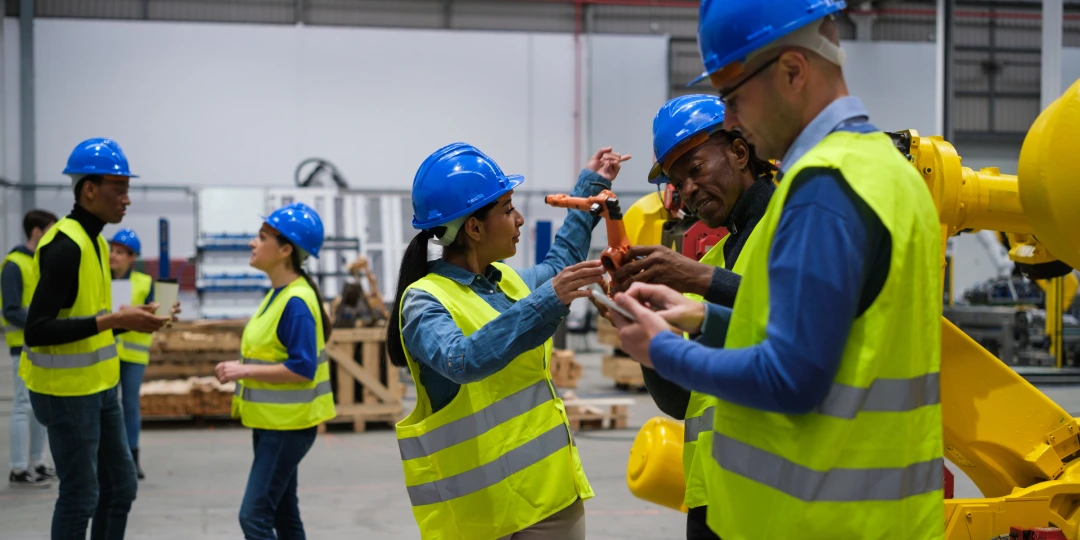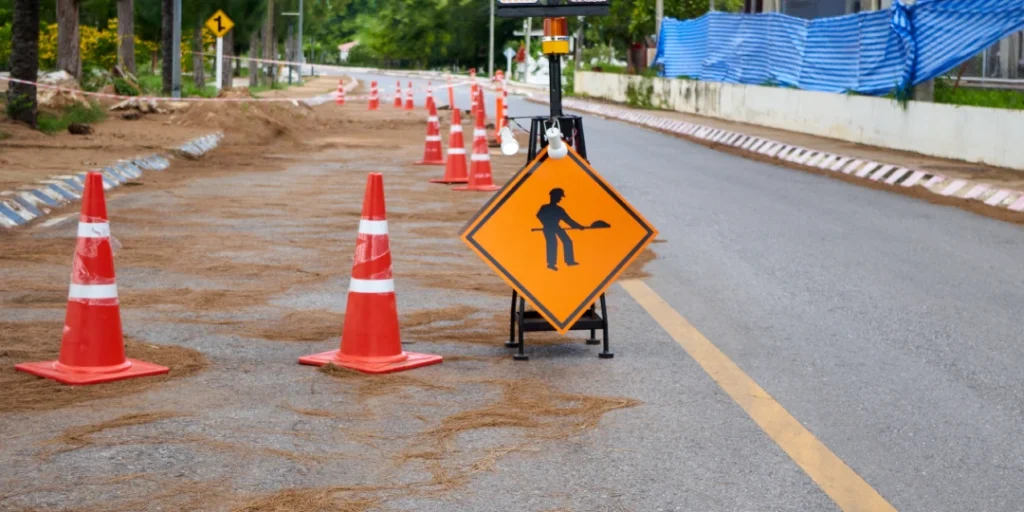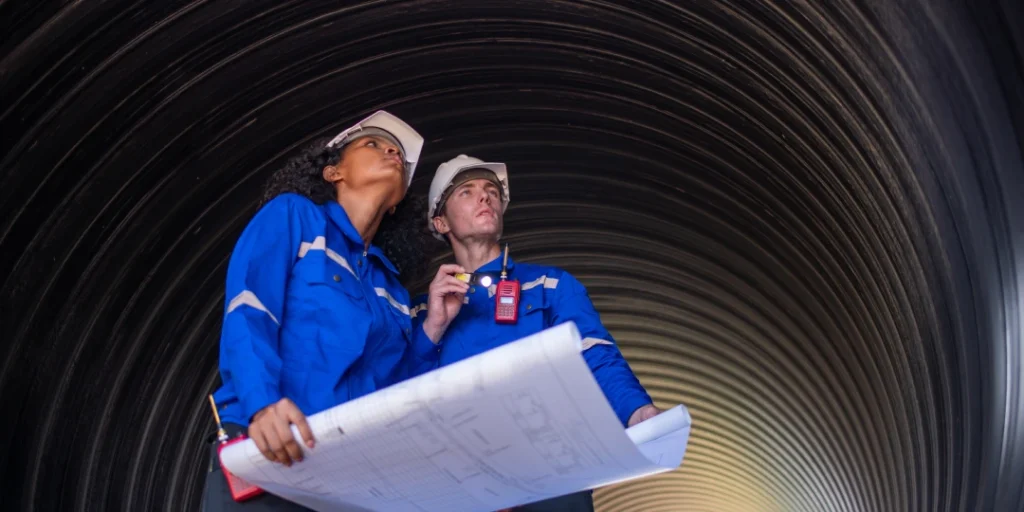Introduction
The pace of development in Nashville is accelerating rapidly, bringing with it a sharp increase in the number of active construction and industrial sites across the city. In this environment, the margin for error is slim. With more workers, machinery, and moving parts on site, the risk of injury grows exponentially. That’s why 10/30 Hour OSHA training has become a foundational component for any crew stepping onto a job site. It’s no longer just a credential—it’s a critical tool for survival and accountability.
Fortier Loss Control has positioned itself at the forefront of this safety movement. By delivering 10/30 Hour OSHA training tailored specifically to the conditions of Nashville’s evolving job market, Fortier bridges the gap between regulatory compliance and real-world application. Their training isn’t theoretical. It is rooted in practical execution, using examples from the very kinds of projects unfolding across the city today—from high-rise development and road reconstruction to large-scale utility work.
This proactive approach empowers workers and supervisors alike to identify hazards, respond decisively, and understand their roles in keeping job sites injury-free. For Fortier, offering 10/30 Hour OSHA training isn’t just about fulfilling a requirement. It’s about cultivating a workforce that leads with safety at the center of its mission. The result is a stronger, more reliable labor force ready to meet the demands of Nashville’s infrastructure boom—safely and confidently.
OSHA Training: A Foundational Requirement
10/30 Hour OSHA training has become a bedrock expectation across industries that deal with elevated physical risk. OSHA, as the national authority on workplace safety, mandates these programs to establish a uniform baseline of knowledge. Whether an employee is pouring concrete or overseeing excavation, their ability to navigate site-specific hazards hinges on a solid understanding of OSHA principles. In this sense, 10/30 Hour OSHA training doesn’t just help workers—it protects the operational integrity of entire projects.
For construction-heavy markets like Nashville, where development is outpacing workforce expansion, standardized training is indispensable. Employers are under pressure to build quickly and efficiently without compromising safety. Through 10/30 Hour OSHA training, Fortier provides companies with a reliable mechanism to onboard staff while maintaining high safety standards. It helps streamline compliance processes and reduces the learning curve for new hires entering complex, high-risk environments.
Moreover, 10/30 Hour OSHA training has implications beyond legal compliance. It establishes a common language of safety. Workers, supervisors, and subcontractors can align on procedures, expectations, and responses using consistent terminology and frameworks taught through these courses. This alignment minimizes confusion, especially in fast-moving situations where clarity can mean the difference between a controlled event and a critical incident. In short, OSHA training doesn’t just set the foundation—it fortifies the entire structure of job site safety.
The Role of OSHA 10 and 30 in Modern Jobsite Safety
In the modern jobsite environment, where complexity and velocity define the workday, 10/30 Hour OSHA training serves as a safety compass for everyone on-site. The 10 Hour course offers essential knowledge for workers who are new to hazardous job environments, arming them with the basics of fall protection, electrical safety, and proper use of personal protective equipment. Meanwhile, the 30 Hour program goes several levels deeper, targeting supervisors and safety managers who must understand not only hazards, but also the systems and policies that govern risk mitigation.
The increasing reliance on subcontractors and temporary labor in Nashville’s booming development scene makes 10/30 Hour OSHA training even more critical. With diverse crews converging on a single site, uniform safety training helps ensure consistency in how risks are identified and addressed. It removes ambiguity and reduces the likelihood of conflicting approaches to basic safety tasks like lockout/tagout procedures or emergency response coordination. In essence, the training promotes cohesion among fragmented teams.
What makes 10/30 Hour OSHA training indispensable in today’s jobsites is its role in shaping proactive safety behavior. It encourages workers to go beyond simple compliance and begin thinking critically about their environment. Instead of passively following directions, trained personnel begin asking the right questions—about materials, site layout, weather conditions, and other dynamic factors. This elevated awareness dramatically increases a site’s resilience against injury and downtime, ultimately supporting a culture where safety isn’t a burden but a shared priority.

Training That Reflects Real-World Nashville Work Environments
Generic training modules often fall short when applied to the nuanced challenges of Nashville’s active work zones. Fortier Loss Control recognizes this gap and infuses local context into its 10/30 Hour OSHA training. Their programs integrate region-specific scenarios—think multi-phase roadwork along I-440 or high-rise builds constrained by narrow urban corridors. This localized relevance keeps trainees engaged and ensures they walk away with knowledge that feels actionable, not abstract.
Weather is another variable that Fortier incorporates into its instruction. Nashville’s climate swings—humid summers, flash storms, and cold snaps—introduce real risks to outdoor labor. Fortier’s 10/30 Hour OSHA training doesn’t gloss over these conditions. It provides practical strategies for adjusting to them, whether through hydration protocols, slip prevention, or modified work pacing during extreme heat. This kind of situational awareness goes beyond the federal baseline, aligning more closely with what workers will actually encounter.
Regulatory nuances also vary by region, and Fortier’s programs address state and local guidelines that may supplement federal OSHA standards. Nashville’s growth has led to overlapping municipal ordinances, especially in urban construction and utility upgrades. Workers and supervisors who undergo Fortier’s 10/30 Hour OSHA training learn how to navigate this regulatory patchwork with confidence, ensuring full compliance while avoiding project delays due to preventable oversights.
Differences Between OSHA 10 and 30: Who Needs What
Not every worker requires the same level of training, and the distinction between OSHA 10 and 30 Hour courses reflects that differentiation in responsibility. The 10 Hour OSHA training is built for entry-level laborers who need to understand immediate risks and safety basics. It introduces them to site-specific hazards, outlines their rights under OSHA, and explains how to report unsafe conditions. It’s a gateway course—accessible, essential, and designed to build a strong safety foundation.
In contrast, the 30 Hour OSHA training is geared toward individuals in supervisory roles. Foremen, project managers, and site safety officers are expected to think systemically about jobsite safety, not just personally. This training dives into policy enforcement, hazard analysis, and incident investigation. It also explores how to build and maintain a site safety plan, audit work zones, and handle OSHA inspections. It equips leaders with the decision-making skills necessary to protect not only themselves, but entire teams.
Understanding who needs which course is vital for proper workforce planning. Employers often mistakenly assign 10 Hour training across the board, but this leaves supervisors underprepared for the responsibilities they shoulder. Fortier Loss Control advises clients on how to tier their teams effectively, ensuring every worker receives the right level of OSHA training. That clarity minimizes organizational risk, streamlines compliance efforts, and raises the collective safety IQ of the entire project team.
Inside Fortier’s Approach to OSHA Instruction
Fortier Loss Control takes a precision-driven approach to 10/30 Hour OSHA training, one that goes far beyond the standard instructional model. Rather than relying on scripted lectures or recycled slide decks, their instructors facilitate immersive, dialogue-based sessions that emphasize understanding over memorization. Each training module is grounded in real-world application, ensuring participants don’t just hear the rules—they learn how to implement them in the field.
At the core of Fortier’s method is a commitment to engagement. The curriculum is adaptive, shifting in tone and depth based on the background of the trainees. A crew of concrete workers might receive a deeper dive into silica exposure and equipment handling, while a utility maintenance team may spend more time on confined space entry and electrical protocols. This level of customization gives the 10/30 Hour OSHA training sessions an uncommon edge: they feel tailored, not templated.
Fortier also understands that adult learners retain more when they’re actively involved. Every 10/30 Hour OSHA training course includes scenario walkthroughs, hazard-mapping exercises, and open Q&A segments where participants can bring up site-specific concerns. This two-way communication builds ownership among workers and promotes a learning atmosphere where safety is not treated as an obligation—but as a shared responsibility.

Field-Tested Instructors With Industry Expertise
The caliber of instruction can make or break a training program. Fortier Loss Control’s 10/30 Hour OSHA training is delivered by instructors who have walked the walk. These aren’t facilitators who studied safety from textbooks—they’re veterans of construction sites, infrastructure projects, and industrial operations. Their credibility in the classroom is built on years of real-life exposure to the very hazards they’re now helping others avoid.
This field-tested experience allows instructors to contextualize the training material in ways that resonate deeply with the workforce. Instead of abstract warnings, they share stories of near-misses, citations, and successful interventions from jobs they’ve personally overseen. For many attendees, especially those skeptical of “classroom safety,” this relatability transforms OSHA content from dry regulation into a compelling narrative about survival and professionalism.
Moreover, Fortier’s instructors stay current. They don’t just rely on past experience—they stay informed on changes in OSHA standards, local enforcement priorities, and emerging risks in the construction and industrial landscape. This ensures that their 10/30 Hour OSHA training is not only grounded in real-world insight but also aligned with the latest compliance requirements and best practices. When they speak, crews listen—because they speak the language of the field.
Enhancing Engagement Through Practical Learning
Engagement is often the missing piece in conventional safety training. Fortier addresses this head-on by designing its 10/30 Hour OSHA training to be active, not passive. Trainees don’t just sit and absorb—they analyze, react, and participate. Whether it’s walking through jobsite hazard simulations or solving interactive quizzes on real-life incidents, the learning experience is tactile and immediate.
This hands-on learning style reflects how people actually process safety in the field. Workers rarely consult manuals mid-shift; they rely on intuition shaped by experience. Fortier’s training mirrors this dynamic by offering opportunities to practice decision-making in controlled environments. For example, participants may be tasked with identifying violations in mock jobsite setups or role-playing a stop-work authority scenario. These exercises reinforce not just what to do—but why it matters.
The result is a workforce that retains information longer and applies it more naturally. Traditional training often fades as soon as the certificate is printed, but Fortier’s practical methods create lasting awareness. Workers who complete their 10/30 Hour OSHA training emerge with more than compliance—they gain confidence in their judgment, clarity in their roles, and a readiness to lead or follow in high-stakes environments.
Certification That Meets Regulatory and Employer Demands
In today’s regulatory landscape, proper documentation is as crucial as practical knowledge. Fortier Loss Control ensures that every participant in its 10/30 Hour OSHA training receives a valid, recognized OSHA completion card upon finishing the course. These credentials are issued through an authorized OSHA Training Institute Education Center, carrying weight across industries and state lines. Whether an employee is transitioning to a new project or a new employer, this certification travels with them, opening doors and reinforcing credibility.
For employers, the value of these certifications extends beyond compliance. Maintaining a workforce with current 10/30 Hour OSHA training demonstrates due diligence to insurance providers, general contractors, and government clients. It can be the difference between winning a bid and being disqualified. Fortier supports employers by managing the administrative side of the training process—keeping rosters organized, documentation accessible, and records audit-ready.
Additionally, Fortier offers guidance on re-certification timelines, changes in OSHA card validity, and how to handle lost or damaged credentials. In a sector where paperwork often lags behind fieldwork, this attention to detail ensures that training doesn’t become a bottleneck. With Fortier, certification isn’t a finish line—it’s a well-documented signal of preparedness, reliability, and adherence to the highest safety standards.
Building Long-Term Safety Culture, One Course at a Time
OSHA compliance isn’t a one-time achievement. It’s the first layer of a sustainable safety culture. Fortier Loss Control views 10/30 Hour OSHA training not just as an isolated session but as an entry point into long-term behavioral change. Their programs are structured to initiate a shift in how workers view their role in maintaining site safety—from passive rule followers to active safety stewards.
This cultural shift is achieved through deliberate messaging embedded throughout the training. Instructors consistently reinforce that safety is not just management’s job, but a shared obligation. Participants are encouraged to take ownership of their surroundings, report hazards, and model best practices—even when no one is watching. This message, repeated and reinforced, gradually reshapes workplace dynamics and expectations.
The long-term impact is measurable. Companies that engage with Fortier for 10/30 Hour OSHA training report fewer incidents, better team communication, and a noticeable improvement in morale. Workers feel empowered and respected, and supervisors gain confidence in the safety literacy of their crews. Over time, this leads to an environment where safety isn’t enforced from the top down—it’s sustained by everyone, every day, on every site.

Frequently Asked Questions
1. Who should take the OSHA 10 and 30 Hour training courses at Fortier Loss Control?
The OSHA 10 Hour course is ideal for entry-level workers in construction, general industry, and related fields who need a foundational understanding of jobsite hazards. The OSHA 30 Hour course is designed for supervisors, foremen, and safety coordinators who are responsible for enforcing safety procedures and managing compliance. Fortier helps guide participants toward the right course based on their role and experience.
2. Is Fortier’s OSHA training recognized by employers and regulatory agencies?
Yes. Fortier Loss Control delivers OSHA-authorized training, and all participants receive official Department of Labor OSHA cards upon successful completion. These certifications are accepted by employers, contractors, and regulatory agencies across the U.S., and are often required for site access or job qualification in Nashville and beyond.
3. Can Fortier provide OSHA training onsite for companies with large teams?
Absolutely. Fortier offers flexible group training options that can be delivered onsite or at a designated location. They work with employers to accommodate project schedules, minimize downtime, and ensure that entire crews receive consistent, high-quality OSHA 10 or 30 Hour training. Custom scheduling, consolidated billing, and administrative support are also available.

Conclusion
In a city defined by growth and momentum, Nashville’s job sites demand more than just speed—they demand safety. The 10/30 Hour OSHA training provided by Fortier Loss Control is not a bureaucratic hurdle. It’s a decisive investment in people, productivity, and protection. Fortier’s programs equip workers and supervisors with the knowledge to prevent accidents, the awareness to respond to risks, and the confidence to lead with safety as a daily priority.
What sets Fortier apart is not just the quality of the training, but its relevance. Their instructors bring jobsite credibility. Their methods foster real engagement. Their support extends beyond the classroom, into documentation, employer compliance, and long-term cultural change. Whether it’s a new laborer earning their first OSHA 10 card or a seasoned foreman advancing through the 30 Hour program, every participant leaves with tools that matter.
At its core, 10/30 Hour OSHA training through Fortier isn’t about checking a box. It’s about building safer job sites, stronger teams, and a workforce that’s ready—not just to work, but to lead. In a market as dynamic as Nashville, that readiness isn’t optional. It’s essential.



